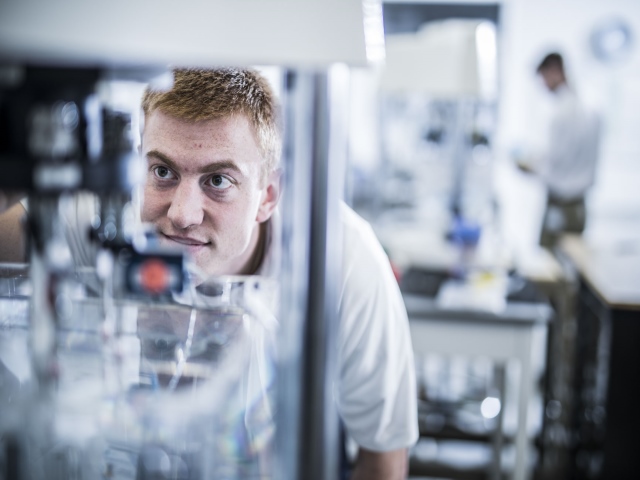Cardiovascular Bend Testing
Stents and other cardiovascular medical devices are often subjected to bending moments during use. FDA’s “Guidance for Industry and FDA Staff – Non-Clinical Engineering Tests and Recommended Labeling for Intravascular Stents and Associated Delivery Systems” issued on April 18, 2010 provides guidelines on the types of mechanical tests manufacturers should consider for their devices.
Ormiston et al1承包元素从多个制造商(雅培血管,生物传感器国际,Medtronic,Medtronic,Boston Scientific)进行了1000万次循环的加速循环弯曲试验,并观察到与临床观察的那些骨折位点类似。因此,弯曲测试可以提供设备制造商关键设计信息。
There are many ways to test bend properties and obtain the information you need for your regulatory submissions. Your device design, intended use, and required bending radii will largely determine the most appropriate test configuration. All of MDT’s fixtures are suitable for use in a phosphate buffered saline (PBS) bath with or without circulation and maintained at 37°C.
Pure Bending
With pure bending, a bend moment is applied to the proximal and distal ends of the device so that the center of the device is in a pure bending configuration. Element’s fixture can be modified to accommodate short and long devices and is suitable for stimulator lead attachment coils and peripheral stents. The fixture is compatible with a PBS bath and can be used as a 10- or 16-station for statistically-significant sample size testing.
Cantilevered Bending
在悬臂弯曲中,样品的近端是固定的,同时将正交位移施加到远端。因此,利用单个悬臂弯曲夹具,在固定端附近的装置的部分以弯曲运动移动。在某些情况下,设备的两端都是固定的,而它们的中心线被移位。这种双悬臂的方法赋予样品两端附近的弯曲。
该固定装置旨在以可定制的曲率半径,角度或位移在多个样品上施加悬臂弯曲。夹具特别适用于需要模拟呼吸循环的肾脏支架测试或设备指示。悬臂的弯曲夹具设计用于在37℃或流量回路和再循环泵的PBS浴中使用。
The relative displacement of the orthogonally-moving end can be measured using either the test instrument displacement transducer or a laser micrometer. The laser micrometer can be configured to measure the bend displacement of each stent at predetermined positions along its length.
恒定的半径弯曲
In constant radius bending, a bending moment is applied at a fixed radius. This type of testing is sometimes referred to as “bending on a mandrel”. With this approach, the proximal end of the specimen is fixed while the distal end is moved through an arc.
To ensure that the specimen bend achieves a fixed radius, it is bent over a mandrel of known radius. This test is useful for achieving predictable positive and compressive stresses. To facilitate bending, a rotary actuator may be used or a linear motion is converted to rotary motion.
Compression Bending
With compression bending, axial motions are applied to the distal and proximal ends of a device that is pre-formed into an omega (or “inch-worm”) shape. As the ends are brought together, the radius of the specimen bend decreases. Unlike pure bending where only one bend is created, compression bending creates three bend radii (distal, center and proximal).
Since the bend angle at the center radius is most extreme, this is where the specimen fails first. This approach can be used to evaluate the bending fatigue resistance of peripheral stents and pacemaker/defibrillator lead wires. Element fixtures are ideal for devices that require smaller bending radii, and up to 20 devices can be mounted in each fixture. To facilitate compression bending, one or more axial actuators are used to bring the specimen ends together at a fixed displacement.
Shear-Induced Bending
In shear-induced bending, a shear motion is applied to one or both ends of the specimen to induce both bending and shearing into the device. The specimen is generally left to find its own radius of curvature based on the applied motions. The induced bending is generally a “rolling bending” where the center of the bend radius moves along the length of the cable. Element’s fixture can accommodate up to 14 samples and be immersed in a PBS bath at 37°C.
Reference
1 Ormiston JA, Webber B, Ubod B, White J, Webster MW. Coronary stent durability and fracture: an independent bench comparison of six contemporary designs using a repetitive bend test. EuroIntervention 2015; 10(12):1449-55
View more articles aboutMore Sectors
Find related articles to you through theNucleus


